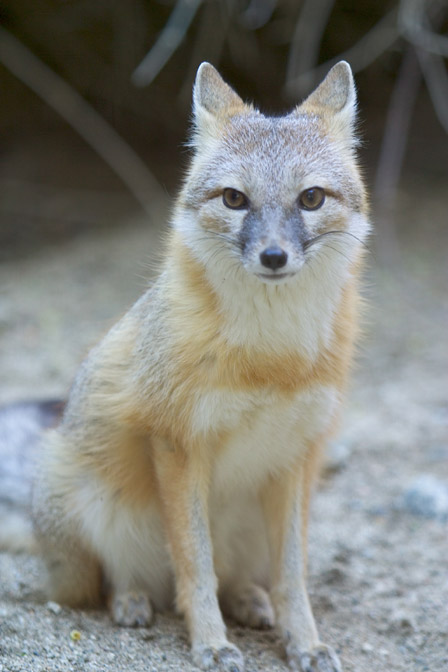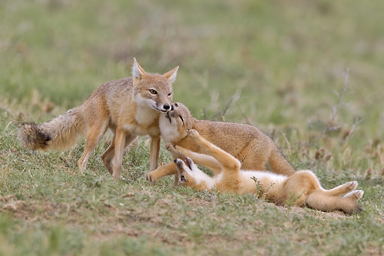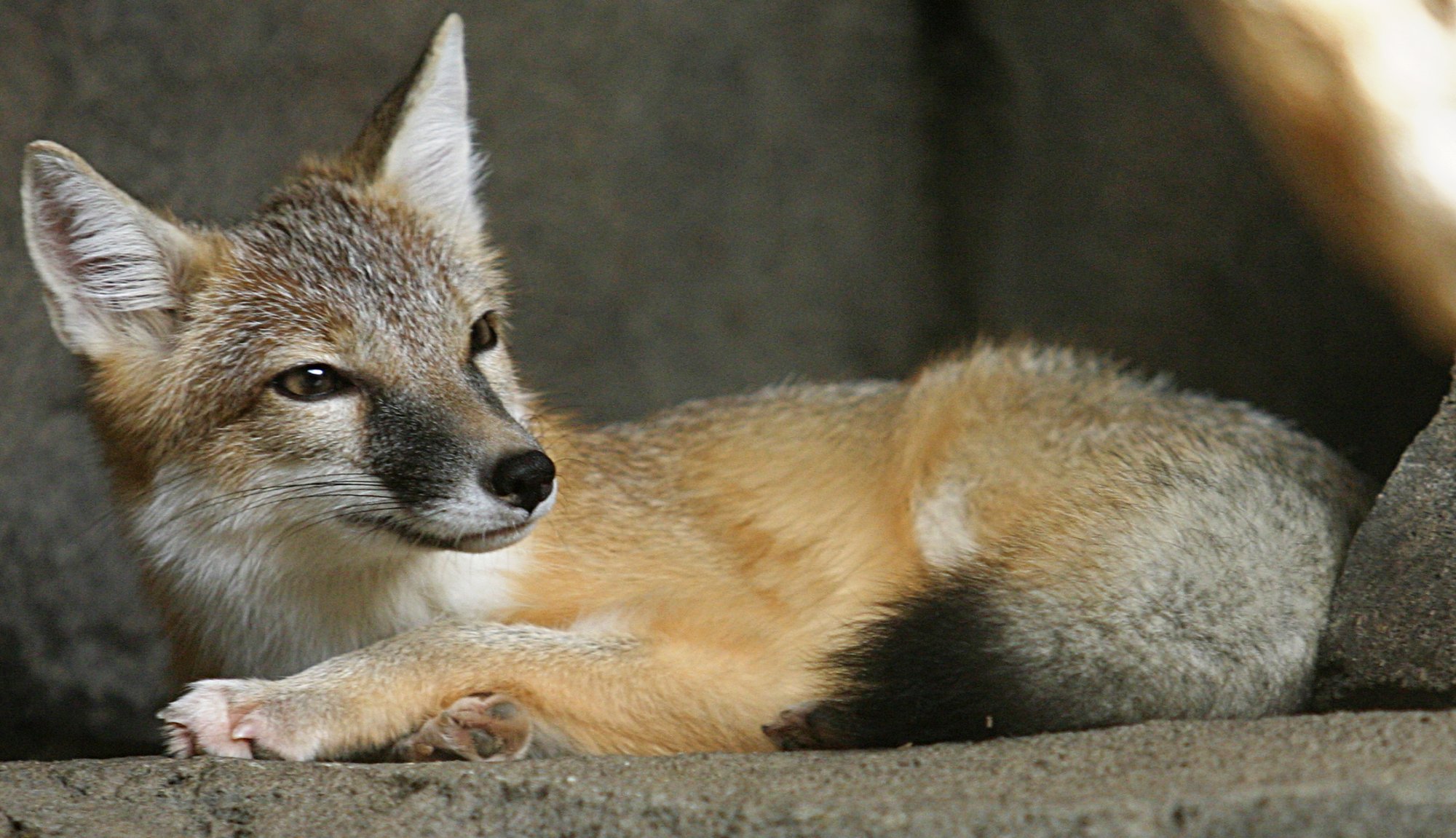
Swift Foxes are part of the Canidae, or "Dog", family - scientifically called vulpes or velox species. The average Swift Fox can grow up to 80cm (31.2 in.) in length, including their tail, and 2.25 - 2.45kg (5 - 5.4 lb.) in weight.
 The Swift Fox lives in pairs on open, sparsely vegatated prairies in dens that are located in well-drained slopes and hilltops near permanent bodies of water - like a river or a pond/lake. They live between 30 to 45 degrees in latitude and are found in Alberta, Saskatchewan, Montana, South Dakota, Wyoming, Nebraska, Colorado, Kansas, Oklahoma, New Mexico, and Texas.
The Swift Fox lives in pairs on open, sparsely vegatated prairies in dens that are located in well-drained slopes and hilltops near permanent bodies of water - like a river or a pond/lake. They live between 30 to 45 degrees in latitude and are found in Alberta, Saskatchewan, Montana, South Dakota, Wyoming, Nebraska, Colorado, Kansas, Oklahoma, New Mexico, and Texas.
Their diet consists of mice, conttontail rabbits and carrion, small mammals, birds, insects, reptiles, and amphibians. So their interactions with other organisms is "to kill or be killed". They usually laze about while the pups play with each other and explore. When they are ready to find some prey for food, the mated pair shows great cooperation and skill in finding and swiftly killing the prey.
It has a broad niche and is a generalist, which means that it can adapt easily to dramatic changes in weather, such as summer and winter in Canada, as well as their food source - if their main food source is gone then they can adapt to find and survive on a new one.
 The Swift Fox lives in pairs on open, sparsely vegatated prairies in dens that are located in well-drained slopes and hilltops near permanent bodies of water - like a river or a pond/lake. They live between 30 to 45 degrees in latitude and are found in Alberta, Saskatchewan, Montana, South Dakota, Wyoming, Nebraska, Colorado, Kansas, Oklahoma, New Mexico, and Texas.
The Swift Fox lives in pairs on open, sparsely vegatated prairies in dens that are located in well-drained slopes and hilltops near permanent bodies of water - like a river or a pond/lake. They live between 30 to 45 degrees in latitude and are found in Alberta, Saskatchewan, Montana, South Dakota, Wyoming, Nebraska, Colorado, Kansas, Oklahoma, New Mexico, and Texas.Their diet consists of mice, conttontail rabbits and carrion, small mammals, birds, insects, reptiles, and amphibians. So their interactions with other organisms is "to kill or be killed". They usually laze about while the pups play with each other and explore. When they are ready to find some prey for food, the mated pair shows great cooperation and skill in finding and swiftly killing the prey.
It has a broad niche and is a generalist, which means that it can adapt easily to dramatic changes in weather, such as summer and winter in Canada, as well as their food source - if their main food source is gone then they can adapt to find and survive on a new one.








